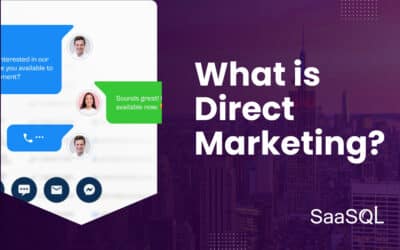If you’re a business owner or marketer who has ever felt like their best efforts at crafting powerful marketing messages fail to resonate with your target audience, this article is likely to help provide a path to improvement. Wondering how to connect deeply and effectively with your target audience?
Breakthrough Advertising techniques, introduced by the legendary copywriter Eugene Schwartz, might just be the secret weapon you’ve been looking for.
This isn’t about shouting louder. It’s not even solely about having a superior product or service. No – it’s about tapping into deep-rooted desires, crafting irresistible messages that speak directly to these needs, and engaging in meaningful ways that forge lasting relationships.

The magic of Breakthrough Advertising is real. But what makes it so powerful? And how can we wield its power successfully today?
Join me on this adventure where we’ll delve into intriguing ideas. We’re talking about sparking mass desire, getting a grip on different stages of prospect awareness, digging deep into ad dimensions, and mastering essential advertising techniques… All these are the precious gems waiting to be discovered in this game.
Table of Contents:
- Unraveling the Impact of “Breakthrough Advertising”
- Decoding the Stages of Prospect Awareness
- The Three Dimensions of an Ad
- Mastering the Techniques of “Breakthrough Advertising”
- FAQs in Relation to Breakthrough Advertising Techniques
- Conclusion
Unraveling the Impact of “Breakthrough Advertising”
“Breakthrough Advertising,” penned by Eugene Schwartz, is more than just a book. It’s an enduring testament to timeless advertising principles that continue to influence modern copywriting.
The Eugene Schwartz breakthrough was not only about writing great ad copy but also understanding customer psychology and tapping into mass desires. But how did this approach transform advertising? Let’s explore.
The Power of Mass Desire in Advertising
Schwartz insisted on the importance of creating mass desire as a cornerstone for effective campaigns. His method involves channeling existing desires rather than trying to instill new ones. As outlined by Schwartz, the key goal of any powerful marketing strategy is to tap into a pervasive and commonly shared need or what that is shared by a large group. In other words, it’s a desire that extends beyond individual preferences. It resonates with a broad audience, and in this way, great marketing has the power to intensify desire, rather than trying to create it.
A perfect example would be Apple using status symbol marketing for their iPhones – they didn’t create the need for smartphones; instead, they leveraged people’s pre-existing desire for prestige and exclusivity.
In short, understanding what your customers already want is key in designing successful ads – hence the relevance of phrases like “create mass desire” in today’s world.
Harnessing the Most Powerful Desire
To make our ads even more compelling, we must identify and use our product or service’s most potent associated desire.This can often mean going beyond obvious functional benefits (think technical specs) to address emotional triggers such as security or self-esteem (e.g., luxury car companies emphasizing feelings over horsepower).
So how, do we harness the most powerful desire?
First, It’s About Understanding the Market’s Mindset: In Breakthrough Advertising, Schwartz emphasizes the importance of understanding the mindset of the target audience. By deeply identifying the their desires, fears and aspirations within a market, advertisers have the potential to align their messages with what already resonates with the masses.
Next, It’s all about Timing: Mass Desire is not static; it evolves over time. Successful advertising needs to take into account the current state of the market, addressing the desires that are most pressing at that moment. Schwartz argued that the most effective ads are those that enter a conversation that is already taking place in the minds of the consumers.
Then, Intensify the Desire: While Mass Desire already exists, Schwartz believed that effective advertising doesn’t just reflect this desire but it seeks to actively intensify it. In this way, advertisers should present their products or services in a way that shines a light on the connection it has to the desires of the target audience. In other words: what glaring problems does your product / service solve?
Embrace Segmentation: Even within a mass market, there will always be different segments with vastly varying desires. Schwartz suggested that successful advertising will almost always involve identifying and addressing these small and specific segments of the population that exist within the larger mass desire, always tailoring messages to resonate with different groups.
And Finally, Create Demand: By aligning with Mass Desire, advertisers give themselves the opportunity to create or amplify the demand for their products. Schwartz believed that advertising has the power to shape and influence the desires of the masses in a way that makes products more appealing, ultimately generating greater demand. Ultimately, it is about demonstrating the ways in ways in which your product or service can improve the lives of the audience.
This strategy is even more critical in our digital age, where competition for attention is fierce and every ad needs to hit the mark.
Applying Schwartz’s Principles Today
In a world that’s digitally interconnected, using these principles helps create breakthrough ads that resonate with target customers. Let’s consider social media – platforms like Facebook and Instagram offer powerful tools to engage audiences on an emotional level.
- A well-made video ad can weave a story that sparks emotions. Similarly, captivating images can stir desires – beautifully aligning with Eugene Schwartz’s vision.
These techniques can work wonders on digital platforms such as Facebook and Instagram. By harnessing the power of Schwartz’s principles, you’ll be able to create advertisements that resonate with your audience. You’re not creating new desires, but rather tapping into what people already want – and it’s more than just functionality; it’s about emotional triggers like security or self-esteem. In a nutshell, effective advertising is all about understanding your customers’ existing cravings and using them to craft compelling messages.
Decoding the Stages of Prospect Awareness
The stages of prospect awareness are a critical aspect in crafting compelling marketing messages. They provide a roadmap for understanding where your target audience is mentally, which can be instrumental in shaping how you communicate with them.
Prospect Awareness refers to the varying level of awareness potential customers have regarding any potential product or service purchase. Schwartz identified different stages of awareness that a prospect will go through, and he emphasized the importance of tailoring messaging to match the prospect’s current level of awareness.
The Stages of Prospect Awareness
Unawareness: At this stage, prospects are unaware of the product, as well as their need for it. Advertising at this level needs to introduce the product and create an awareness of the problem or desire that the product addresses.
Awareness of Problem: Prospects become aware that they have a problem or a need. However, they may not be aware of specific solutions or products. Advertising at this stage should focus on defining the problem and positioning the product as a solution.
Awareness of Solution: Prospects are aware of the existence of products that can solve their problem, but they may not be familiar with the specific benefits or features of a particular product. Advertising at this stage should highlight the unique selling points of the product.
Awareness of Product: Prospects are now aware of the product, but they may have reservations or concerns. Advertising should address these concerns and build credibility for the product.
Desire for the Product: At this stage, prospects not only know about the product but also desire it. Advertising should focus on creating a sense of urgency and encouraging prospects to take action.
Action: Prospects take the desired action, whether it’s making a purchase or some other form of conversion.
Schwartz emphasized the importance of tailoring advertising messages to the prospect’s current level of awareness. Trying to sell a product to prospects who are unaware of both the product and their need for it requires a different approach than persuading those who are already aware of the product but need more information or reassurance.
Navigating Market Sophistication
Market sophistication plays an integral role when it comes to strategizing an advertising campaign. It may be difficult to make an impression and get noticed in a highly developed market. Understanding this concept can help businesses tailor their approach accordingly.
Eugene Schwartz’s Breakthrough Advertising suggests five levels of market sophistication that marketers need to navigate:
- The first product on the scene solves a problem no one else has addressed before.
- New products appear, claiming they solve the problem better or differently.
- All solutions seem similar; advertisers focus on unique mechanisms within their product that give it an edge over competitors.
- To stand out now requires making bigger promises based on improved versions of those mechanisms (fourth stage).
- All claims sound alike and trust erodes; companies must rely heavily on branding and identity rather than superior features or benefits alone (product aware).
Your customers could range from being unaware they have a problem (problem aware) to actively seeking out solutions (solution aware). Depending upon these varying degrees of customer knowledge about both problems and potential remedies significantly impacts what kind of message will resonate best with them.
Let’s take “market sophistication” as an example – by acknowledging how advanced your target audience already is regarding its comprehension about existing offerings related to yours – helps in crafting suitable strategies.
It’s about understanding the sophistication stage of your market and tailoring your marketing approach to match. This way, you ensure that your message is hitting home in a way that resonates with their current level of awareness and understanding.
The Importance of Customer Knowledge
Achieving effective customer engagement is not just about an innovative product or service. It’s also about explaining its benefits in a way that resonates with the customers. Knowing where they are on Schwartz’s stages lets us tailor our messages to their current understanding – whether they’re unaware of the problem, or already seeking solutions.
Understanding your prospect’s awareness and market sophistication is crucial in crafting effective marketing messages. You need to tailor your approach based on where they stand – from being unaware of a problem, to actively seeking solutions. This helps ensure that you’re hitting home with messaging that resonates with their current level of understanding.
The Three Dimensions of an Ad
When we think about what makes people read, want, and believe in an advertisement, it boils down to three key dimensions. Eugene Schwartz eloquently highlighted these aspects in his renowned work “Breakthrough Advertising”. Let’s explore each dimension individually.
Determining Ad Length
In the realm of advertising, size does matter – but not necessarily how you might expect. The length of your ad isn’t determined by some arbitrary standard or a copywriter’s whimsy; instead, it’s driven by two primary factors: the level of awareness your reader has about your product (reader reading), and how much they need to know before they buy (customers buy).
Essentially, if customers are well-versed with the product benefits or have experienced its value firsthand – like a loyal iPhone user awaiting Apple’s latest release – then shorter ads can suffice. They already understand why they should buy.
If on the other hand potential customers aren’t as familiar with what you’re selling – say introducing a novel eco-friendly tech gadget into a market dominated by conventional options – then longer body copy may be needed. Here detailed descriptions serve as educational tools helping prospects grasp the uniqueness and usefulness of such innovation.
Making People Read
A good headline grabs attention while excellent body content keeps that attention intact throughout. This combination is essential for engaging readers’ interest from start to finish; this is particularly crucial online where users skim through content at warp speed. As marketers we need to create compelling hooks which prompt our audience not only just to glance but also linger over our message.
Making People Want
An effective ad goes beyond capturing attention; it sparks desire within viewers leading them towards action – purchasing products or services advertised. According to the Marketing Donut, this desire can be stimulated by appealing to viewers’ emotions, identifying their pain points or highlighting how a product or service addresses those issues.
Making People Believe
The final dimension is fostering belief in your offering.
Creating a compelling ad involves three dimensions: making people read, want, and believe. Ad length should be determined by the reader’s product awareness and what they need to know before buying. For well-known products, shorter ads work fine but unfamiliar offerings might need longer descriptions. Your content must grab attention and maintain it while sparking desire leading to action.
Mastering the Techniques of “Breakthrough Advertising”
The techniques outlined in Eugene Schwartz’s seminal work, “Breakthrough Advertising,” remain as relevant today as they were when first published. They’re not just theory; these are practical tools that have stood the test of time and technological evolution.
The Role of Intensification and Identification
In advertising, intensification is all about ramping up emotions to create a compelling narrative around your product or service. On the other hand, identification lets customers see themselves in your brand story. But how do you practically apply these two key concepts?
To start with intensification, consider using powerful words and phrases that tap into mass desires — fear of missing out (FOMO), desire for status symbol goods or services, longing for acceptance among peers. These elements can turn an ordinary ad into a breakthrough one.
An excellent example is Apple’s marketing strategy for its iPhones. By positioning them as more than just functional products but also lifestyle patterns reflectors and status symbols, Apple taps into consumers’ deep-seated desires—desire to belong to a group perceived as sophisticated or trendy.
Moving onto identification: it’s important here to truly understand your target customers’ pain points so you can craft messages resonating with their experiences.
| Intensify | Identify | |
|---|---|---|
| Your message should… | Tap into deeply seated human desires like belongingness, | Echo customer’s personal experiences |
| Key to success… | A strong understanding of mass desires | Knowledge of customer psychology and their pain points |
| Possible outcomes… | Increased brand awareness, enhanced customer engagement | Fostering a sense of brand loyalty through shared experiences |
So, what’s the main point we’re driving at here?
FAQs in Relation to Breakthrough Advertising Techniques
What is Breakthrough Advertising?
“Breakthrough Advertising” is a legendary book by Eugene Schwartz. It’s famed for teaching how to create potent ads that tap into mass desire.
What are the principles of Breakthrough Advertising?
The core principles involve understanding and leveraging mass desire, knowing your audience’s awareness level, and using these insights to craft compelling ad messages.
What is the summary of Breakthrough Advertising by Eugene Schwartz?
Schwartz’s “Breakthrough Advertising” delves into effective advertising techniques: exploiting mass desires, decoding prospect awareness stages, and creating impactful advertisements through specific strategies.
Why is Breakthrough Advertising so expensive?
This book carries high demand due to its valuable content but has limited copies available – making it an expensive yet worthy investment for advertisers.
Conclusion
It’s a wrap! We’ve unraveled the genius behind Breakthrough Advertising techniques, courtesy of copywriting legend Eugene Schwartz. Now you know how to tap into mass desires, not just shout louder in your ads.
We’ve navigated through different stages of prospect awareness and explored market sophistication. Remember – tailor your marketing messages for maximum impact!
We delved into ad dimensions – what makes people read, want, and believe – all crucial elements in crafting compelling advertisements.
You’re now equipped with key advertising techniques like intensification and identification that can help create breakthroughs for your brand. Apply them well to see results!
The power is yours! Use it wisely and watch as your business reaches new heights with these timeless strategies from Breakthrough Advertising.







